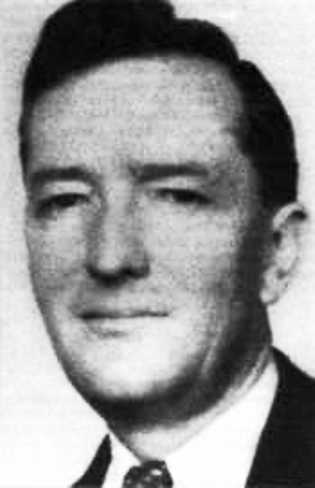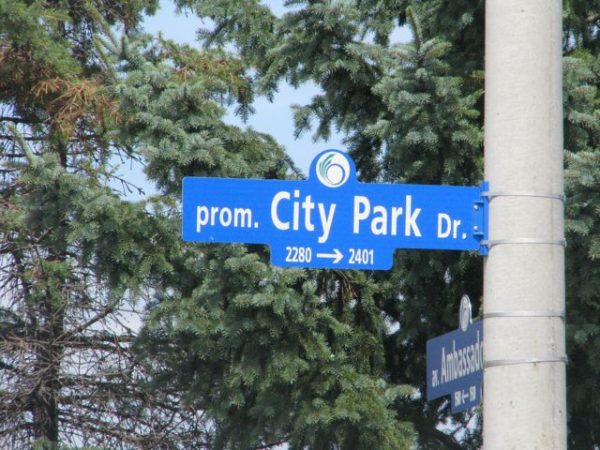There are many streets scattered across the city of Ottawa with names one can argue as being “generic” or “boring”. Setting aside the classic argument of one former Ontario premier that “boring works”, some of those name choices should be set aside.
One in particular, I argue for here. It is my own opinion, but if others find it agreeable, I won’t object.
If you’ll permit some historical stage-setting: around the time frame of 1990-‘91, the former city of Gloucester began the process of building City Park Drive, a side street looping southwards off of Ogilvie Road near the Gloucester Centre Mall. There would eventually be side streets branching off within that loop for condominiums to be built and called home by hundreds of our neighbours.
Around the same time frame, construction began on the north side of Ogilvie on the current headquarters of the first of its best-known – and perhaps least understood – neighbours: the Canadian Security and Intelligence Service. A decade or so later, their military-affiliated counterparts, the Communications Security Establishment, would set up their own shop right next door. Both buildings are striking in terms of design for different reasons, and not the kind of design that one might expect or prefer for the headquarters of intelligence services. That matter of architectural taste can be argued another time in other venues.
To the point: however misunderstood the work of those organizations may be, it can nonetheless be argued that their work – and those of their forebears in the structure of the Canadian government – has at times been vital to Canada…and particularly when it comes to discussing World War II. One Canadian citizen in particular has been honoured with some justification for his work in that field. I’ve checked and discovered that his name has yet to be commemorated anywhere within the current city limits, and perhaps it is time that was now remedied.

Source: Intrepid Society.
That person is Sir William Stephenson, better known even now in some circles as “a Man Called Intrepid” thanks to his biography of the same name.
Born William Samuel Clouston Stanger in 1897 in what is now Winnipeg, Manitoba, he would grow up to become a veteran of the First World War surviving POW camp life in the process. After returning from that war, Stephenson would go on to become a successful businessman after moving to the UK with involvement in fields ranging from radio manufacturing to movie production.
He subsequently became one of the key figures behind the process of getting the United States into World War II on the side of the Allies, first as an independent source reporting to Winston Churchill beginning in 1936 on the activities of the Nazis in Germany, using information gleaned from his companies’ activities in continental Europe. From 1940 onwards, that work continued, when he joined British Security Coordination from his posting in New York City. His work with BSC during the Second World War, better documented in several books, including the aforementioned autobiography, was such that when fellow BSC employee Ian Fleming was asked about his sources of inspiration for his own creation of fictional super-spy James Bond, H. Montgomery Hyde’s book Room 3603 records this answer:
James Bond is not in fact a hero, but an efficient and not very attractive blunt instrument in the hands of government, and though he is a meld of various qualities I noted among Secret Service men and commandos in the last war, he remains, of course, a highly romanticised version of the true spy…
Such a man is the Quiet Canadian, otherwise Sir William Stephenson, M.C., D.F.C., known throughout the war to his subordinates and friends, and to the enemy, as ‘Little Bill.’ He is the man who became one of the great secret agents of the last war, and it would be a foolish person who would argue his credentials; to which I would add, from my own experience, that he is a man of few words and has a magnetic personality and the quality of making anyone ready to follow him to the ends of the earth.
From the Intrepid Society website, we learn that he has already been honoured with a street naming in his Winnipeg birthplace, when Winnipeg city hall renamed Water Avenue as William Stephenson Way. I propose that the city of Ottawa bestow the same honour upon Sir William here, by renaming City Park Drive accordingly. As he was the most respected spymaster Canada has yet produced – so far as we presently know – it is right and proper to rename this particular street in such close proximity to the workplaces of the heirs to his efforts, out of respect for his memory and work.
In closing, I note again: neither Sir William’s actual name, nor the code name most closely associated with his work, are yet used anywhere within Ottawa’s borders. Which of the two names would best serve this purpose is a question we can certainly debate.

